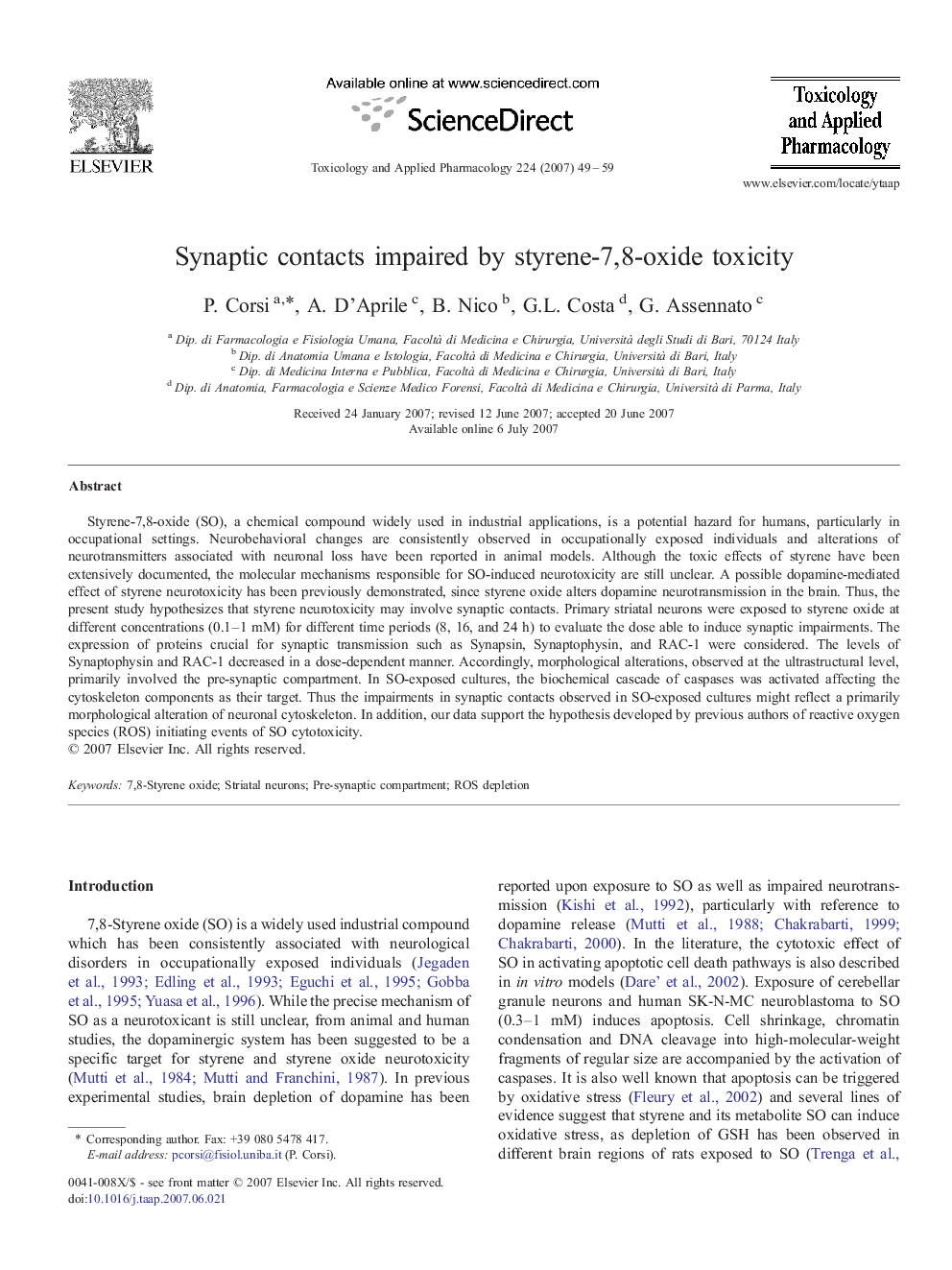| Article ID | Journal | Published Year | Pages | File Type |
|---|---|---|---|---|
| 2571745 | Toxicology and Applied Pharmacology | 2007 | 11 Pages |
Styrene-7,8-oxide (SO), a chemical compound widely used in industrial applications, is a potential hazard for humans, particularly in occupational settings. Neurobehavioral changes are consistently observed in occupationally exposed individuals and alterations of neurotransmitters associated with neuronal loss have been reported in animal models. Although the toxic effects of styrene have been extensively documented, the molecular mechanisms responsible for SO-induced neurotoxicity are still unclear. A possible dopamine-mediated effect of styrene neurotoxicity has been previously demonstrated, since styrene oxide alters dopamine neurotransmission in the brain. Thus, the present study hypothesizes that styrene neurotoxicity may involve synaptic contacts. Primary striatal neurons were exposed to styrene oxide at different concentrations (0.1–1 mM) for different time periods (8, 16, and 24 h) to evaluate the dose able to induce synaptic impairments. The expression of proteins crucial for synaptic transmission such as Synapsin, Synaptophysin, and RAC-1 were considered. The levels of Synaptophysin and RAC-1 decreased in a dose-dependent manner. Accordingly, morphological alterations, observed at the ultrastructural level, primarily involved the pre-synaptic compartment. In SO-exposed cultures, the biochemical cascade of caspases was activated affecting the cytoskeleton components as their target. Thus the impairments in synaptic contacts observed in SO-exposed cultures might reflect a primarily morphological alteration of neuronal cytoskeleton. In addition, our data support the hypothesis developed by previous authors of reactive oxygen species (ROS) initiating events of SO cytotoxicity.
